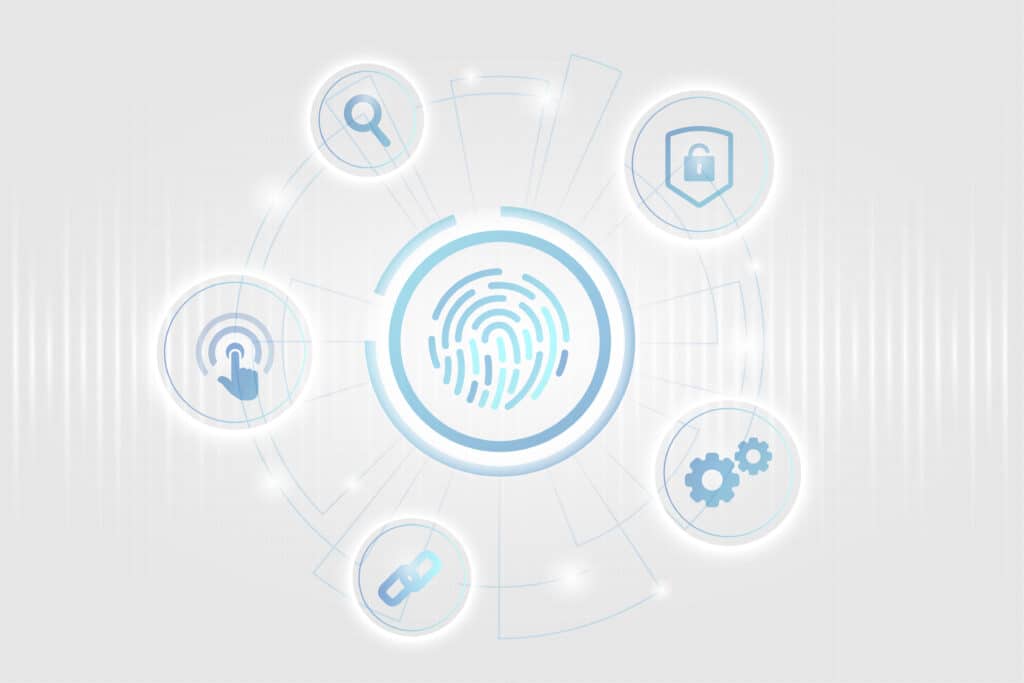Identity Verification Implications For Digital Identity Management

In an increasingly digital world, the significance of identity verification cannot be overstated. As online interactions become more prevalent, it is essential to ensure that users are accurately representing their identities to maintain security and foster trust. This article examines the risks associated with neglecting identity verification, ID verification for digital ID management, its vital role in enhancing digital security, and the various methods available for verifying identities. It will also address the benefits of implementing robust identity verification systems and the challenges that organizations encounter in executing these systems effectively.
This discussion aims to provide a comprehensive understanding of the critical aspects of digital identity management.
Why is Identity Verification Important for Digital Identity Management?
Identity verification is a crucial aspect of digital identity management, functioning as a primary defense against identity theft and fraud. In an increasingly digital landscape, it is essential to ensure that individuals are accurately represented as they claim, which is vital for maintaining online security and protecting user data.
Effective identity verification safeguards against unauthorized access while also fostering trust in online transactions and interactions. This is particularly significant for compliance with KYC (Know Your Customer) and AML (Anti-Money Laundering) regulations. Moreover, it facilitates the establishment of a secure digital identity that aligns with regulatory standards.
What are the Risks of Not Verifying Identity?
Failing to verify identity can expose organizations and individuals to considerable risks, including identity theft and fraud. Without a robust verification process, unauthorized users may gain access to sensitive data, resulting in data breaches that compromise user privacy and trust. Such vulnerabilities not only lead to financial losses but also damage reputations and attract regulatory scrutiny. The absence of effective fraud detection mechanisms can impede risk management efforts, thereby facilitating malicious actors in exploiting security weaknesses.
For instance, identity theft can manifest in various forms, such as unauthorized credit card charges or account takeovers, which significantly impact victims’ financial stability and credit scores. High-profile data breaches at major corporations have shown how easily criminal manipulate information. The implications of such incidents extend beyond individual cases; they foster a widespread atmosphere of distrust in online transactions.
When identity verification processes are inadequate, the resulting exposure not only affects the victims but also raises concerns regarding the overall security posture of the organization. This situation may prompt potential customers to seek more reliable alternatives.
How Does Identity Verification Impact Digital Security?
Identity verification is a critical component in enhancing digital security, ensuring secure access to online platforms and services. By implementing robust authentication methods, organizations can effectively manage user identities and safeguard sensitive information against unauthorized access.
Various techniques, such as multi-factor authentication and biometric verification, further strengthen this process. These methods not only enhance user verification but are also essential in promoting trust among users.
With comprehensive identity governance practices in place, organizations can maintain a detailed overview of user activities, ensuring compliance and facilitating the swift detection of anomalies. Consequently, improved identity analytics play a vital role in identifying trends and potential vulnerabilities, enabling organizations to adapt and respond effectively to evolving security threats.
Ultimately, this focus on identity verification contributes to a more resilient digital ecosystem.
What are the Different Methods of Identity Verification?
A variety of identity verification methods are available to ensure accurate user authentication. These methods encompass both traditional techniques, such as knowledge-based verification, and advanced solutions, including biometric authentication and multi-factor authentication.
Each approach is integral to the identity proofing process, utilizing technologies that evaluate identity attributes and user behaviors. Organization aiming to implement effective identity verification solutions that are aligned with their specific security requirements must thoroughly understand these methods.
1. Knowledge-based Verification
Knowledge-based verification is a traditional method that utilizes information known to the user, such as passwords or security questions, to authenticate their identity. This approach is widely employed due to its simplicity and straightforward implementation.
However, while it contributes to identity verification solutions, it often challenges user experience and security, especially when users forget their credentials or when someone compromise this information.
The reliance on memory for authentication can lead to significant frustration, as users frequently encounter difficulties in creating and recalling complex passwords. Additionally, security questions may be easily guessed or obtained through social engineering tactics, which considerably diminishes their effectiveness.
Despite these limitations, knowledge-based verification continues to serve as a foundational component of user authentication schemes. To improve both security and user experience, organizations are increasingly exploring supplementary measures, such as multi-factor authentication (MFA) and biometric solutions. These additional layers could offer a more robust framework for safeguarding user identities while minimizing friction in the authentication process.
2. Biometric Verification
Biometric verification employs distinctive physical or behavioral characteristics, such as fingerprints, facial recognition, or voice patterns, to authenticate users’ identities. This method of biometric authentication provides a high level of security, as it is inherently difficult to replicate or forge.
By incorporating biometric data into identity proofing processes, organizations can significantly mitigate the risk of identity fraud and enhance their overall identity verification technologies.
Such advanced verification approaches not only streamline the user experience but also address the limitations of traditional methods, like passwords and security questions, which user often forget or compromise. Organizations that implement biometric verification often observe an increase in user trust, as these systems establish a more robust barrier against unauthorized access.
Additionally, these systems can be seamlessly integrated into various applications. Including mobile banking and secure facility access, rendering them increasingly essential in today’s digital environment.
As more institutions embrace this innovative technology, the landscape of identity verification continues to evolve, underscoring the importance of both convenience and stringent security measures.
3. Document-based Verification
Document-based verification entails the utilization of official identity documentation, such as passports, driver’s licenses, or national ID cards, to authenticate a user’s identity. This methodology is frequently adopted in Know Your Customer (KYC) and Anti-Money Laundering (AML) processes. Ensure adherence to regulatory standards. By mandating physical proof of identity, organizations can enhance online identity security and reduce the risk of identity fraud.
The process typically requires users to submit clear images or scans of their documents, and then subject to rigorous checks for authenticity and accuracy. Organizations employ advanced technologies, including artificial intelligence and machine learning, to analyze these documents, ensuring compliance with stringent criteria. This verification procedure not only assists in identifying forged or altered documents but also aligns with legal requirements, thereby enhancing the integrity of the identity verification process.
As businesses increasingly transition to online platforms, the importance of document-based verification continues to escalate, establishing it as a vital component in fostering trust and security in digital transactions.
4. Two-factor Authentication
Two-factor authentication (2FA) significantly enhances security by requiring users to verify their identity through two distinct methods, typically a password and a secondary factor such as a mobile device or email confirmation. This multi-factor authentication approach substantially decreases the likelihood of unauthorized access, thereby fostering a more secure access environment. As a crucial component of effective authentication frameworks, organizations increasingly adopt 2FA by organizations to protect sensitive data and user accounts from identity theft.
By implementing this essential security layer, businesses not only safeguard their digital assets but also cultivate user trust by demonstrating a commitment to the protection of personal information. The integration of 2FA into an organization’s cybersecurity strategy presents a formidable barrier to potential intruders, as they would need to bypass two separate verification methods.
To optimize the effectiveness of 2FA, it is imperative for organizations to adhere to best practices, such as educating users about potential phishing attacks that may target the secondary verification factor and ensuring the availability of backup options should a user be unable to access their primary verification method. Such comprehensive strategies not only enhance security but also promote a culture of awareness and adherence to security protocols.
What are the Benefits of Identity Verification?
Implementing effective identity verification processes provides numerous benefits that enhance both security and user experience. By preventing online fraud and identity theft, organizations can establish a robust framework for identity assurance and governance.
Moreover, these verification processes contribute to fostering user trust, ensuring that customers feel secure when engaging with online services and transactions. This trust is essential in today’s digital landscape, where data protection and privacy concerns are of utmost importance.
1. Prevents Fraud and Identity Theft
One of the primary advantages of robust identity verification is its capacity to prevent fraud and identity theft. By implementing best practices in identity verification, organizations can effectively deter unauthorized access and safeguard sensitive user data from malicious actors. This proactive approach not only protects user information but also fosters a reputation for online security and trustworthiness.
For example, a reputable financial institution recently integrated multi-factor authentication into its identity verification measures, leading to a 30% reduction in account takeovers. This method combines knowledge-based factors, such as a password, with possession-based factors, like a mobile device. Furthermore, organizations can enhance their verification processes by incorporating biometric checks and AI-driven risk assessments.
These strategies not only facilitate the identification of fraudulent activities in real time but also optimize the user experience, allowing legitimate customers to access their accounts with ease while ensuring the security of their data.
2. Improves Customer Trust and Satisfaction
Effective identity verification processes are essential for enhancing customer trust and satisfaction. When users feel secure in their interactions with identity management systems, they are more inclined to engage with services, which fosters loyalty and cultivates long-term relationships. Compliance with regulatory standards further fortifies this trust, demonstrating a commitment to user privacy and data protection.
As individuals increasingly navigate digital landscapes, the necessity of robust verification systems has become increasingly evident. Users expect seamless interactions, and any perception of insecurity can lead to hesitation or disengagement.
By implementing secure processes, businesses not only safeguard sensitive information but also enhance the user experience, creating an environment where customers feel valued and respected. Adherence to regulations not only protects consumers but also instills confidence in the brand, positioning it as a preferred choice in a competitive marketplace.
In this context, the synergy between verification integrity and regulatory compliance serves as a fundamental pillar for sustainable user engagement.
3. Streamlines Online Processes
Identity verification solutions can greatly enhance online processes by making them more efficient and expedient for users. By automating the verification procedures, organizations can improve the user experience and reduce friction throughout the identity lifecycle, resulting in faster approvals and transactions. This efficiency is crucial in today’s rapidly evolving digital landscape, where user expectations are elevated.
Through automated identity checks and real-time data processing, companies can ensure that customer onboarding is both swift and secure. This degree of automation diminishes the potential for human error and reduces opportunities for fraudulent activities, thereby reinforcing trust between users and service providers.
Furthermore, effective identity lifecycle management becomes streamlined, enabling organizations to easily update and maintain user information as necessary. Consequently, customers benefit from a smoother and more reliable experience, which fosters brand loyalty and overall satisfaction in an increasingly competitive market.
What are the Challenges of Implementing Identity Verification?
Identity verification is a critical component in safeguarding digital interactions; however, it poses several challenges that organizations must address.
It is imperative to strike a balance between implementing robust security measures and ensuring an optimal user experience. Overly complicated verification processes can lead to user frustration and abandonment.
Furthermore, addressing privacy concerns is a significant challenge, as users require assurance that their personal data is being managed responsibly and securely.
1. Balancing Security and User Experience
One of the most significant challenges in identity verification lies in the need to balance security with user experience. While robust authentication frameworks are essential to safeguard against unauthorized access, excessively stringent security measures can impede user experience and lead to dissatisfaction. Therefore, it is imperative for organizations to identify the appropriate balance to ensure that their identity management systems are both secure and user-friendly.
To achieve this balance, companies can implement multi-factor authentication (MFA) that incorporates biometric data alongside traditional password methods, thereby enhancing security without compromising user convenience. For example, a financial institution may allow users to log in quickly using facial recognition while still requiring additional verification for higher-risk transactions.
Moreover, adopting a risk-based authentication approach enables organizations to tailor security measures based on the context of a user’s activity. Also, ensure that low-risk actions are conducted smoothly while maintaining a heightened level of scrutiny for suspicious behavior. These practices, when combined with comprehensive user education on security protocols, can foster trust and satisfaction among users.
2. Addressing Privacy Concerns
Addressing privacy concerns is a critical component of implementing identity verification. As users become increasingly aware of their privacy rights and data protection regulations, organizations must ensure that their verification processes respect user privacy and demonstrate responsible data usage. Neglecting to do so can undermine user trust and potentially lead to legal repercussions.
Organizations are required to align their identity verification practices with established regulations, such as the General Data Protection Regulation (GDPR) and the California Consumer Privacy Act (CCPA), which prioritize user consent and transparency. Adhering to these frameworks not only protects personal information but also enhances a company’s reputation as a trustworthy entity.
Implementing best practices, such as utilizing encryption and limiting data collection to only essential information, is vital in reinforcing privacy. By prioritizing these measures, businesses create a secure environment, assures users their data is being managed responsibly. Also, foster loyalty and promote a positive customer experience.
3. Ensuring Accessibility for All Users
Ensuring accessibility for all users presents a significant challenge in the realm of identity verification. Organizations must design verification processes that accommodate the diverse needs and preferences of users, including those with disabilities or limited access to technology. This inclusivity is essential for enhancing the user experience and addressing identity management challenges associated with access barriers.
To achieve this objective, organizations can implement various strategies, such as employing multi-modal verification methods that incorporate visual, auditory, and tactile options, thereby allowing users to select the approach with which they are most comfortable. For instance, integrating voice recognition technology or providing text-based alternatives can enable users with varying abilities. Additionally, ensuring mobile-first solutions enables individuals with limited access to traditional devices to engage fully in the verification process.
Organizations should also conduct regular usability testing with a diverse user base to identify any potential gaps in their identity verification processes. By prioritizing these best practices, organizations can foster a more inclusive and accessible environment that effectively supports all users.
Frequently Asked Questions
What is identity verification and why is it important for digital identity management?
Identity verification is the process of verifying an individual’s identity and ensuring that they are who they claim to be. It is crucial for digital identity management as it helps prevent fraud and protect sensitive information.
What are the different methods of identity verification used in digital identity management?
Several methods of identity verification used in digital identity management. For reference biometric verification, knowledge-based verification, and document verification. Every method has its own benefits and can be chosen based on level of security required.
How does identity verification impact online security?
Identity verification plays a vital role in ensuring online security. By verifying an individual’s identity, it helps prevent unauthorized access to sensitive information and reduces the risk of identity theft and fraud.
What are the potential risks associated with identity verification in digital identity management?
One of the main risks associated with identity verification in digital identity management is the possibility of a data breach. If organization do not properly secure sensitive information, it can lead to identity theft and other fraudulent activities.
Can identity verification be done remotely?
Yes, advancements in technology now allow identity verification to be done remotely using online identity verification solutions. These solutions use biometric and document verification to verify an individual’s identity without the need for in-person verification.
How does identity verification comply with privacy regulations?
Identity verification processes must comply with privacy regulations to protect individuals’ personal information. This includes obtaining individual’s consent and ensuring that their information is solely for identity verification.



